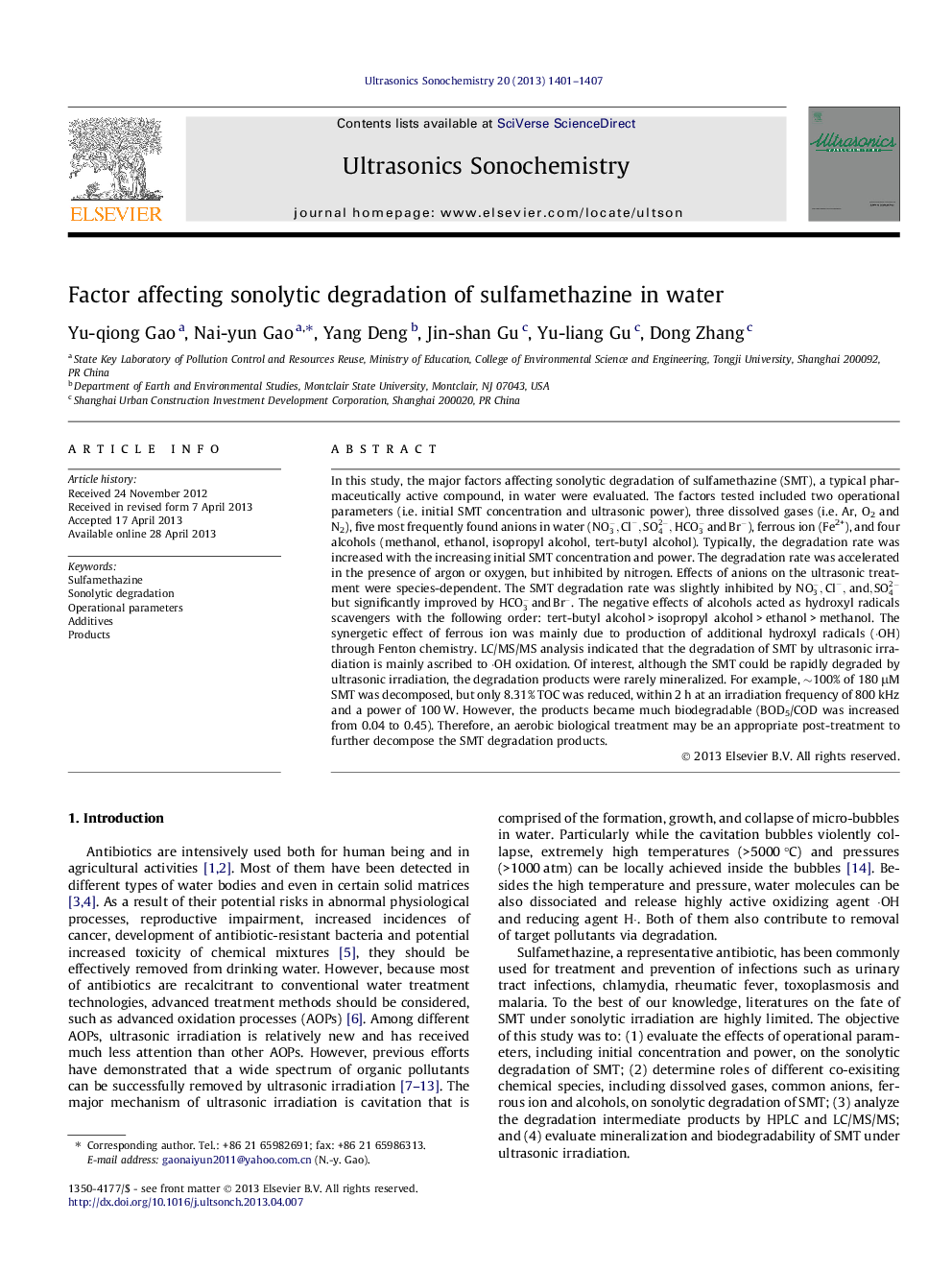| کد مقاله | کد نشریه | سال انتشار | مقاله انگلیسی | نسخه تمام متن |
|---|---|---|---|---|
| 1266152 | 1496883 | 2013 | 7 صفحه PDF | دانلود رایگان |

• Factors affecting high frequency irradiation degrade SMT were comprehensively investigated.
• The degradation of SMT well fitted with the Langmuir–Hinshelwood model.
• Dissolved gases and common anions can enhance or inhibit the SMT degradation to different degrees.
• Hydroxyl radical oxidation leads the degradation of SMT during ultrasonic irradiation according to LC/MS/MS analysis.
• The biodegradability during sonolytic treatment of SMT solution was improved.
In this study, the major factors affecting sonolytic degradation of sulfamethazine (SMT), a typical pharmaceutically active compound, in water were evaluated. The factors tested included two operational parameters (i.e. initial SMT concentration and ultrasonic power), three dissolved gases (i.e. Ar, O2 and N2), five most frequently found anions in water (NO3-,Cl-,SO42-,HCO3-andBr-), ferrous ion (Fe2+), and four alcohols (methanol, ethanol, isopropyl alcohol, tert-butyl alcohol). Typically, the degradation rate was increased with the increasing initial SMT concentration and power. The degradation rate was accelerated in the presence of argon or oxygen, but inhibited by nitrogen. Effects of anions on the ultrasonic treatment were species-dependent. The SMT degradation rate was slightly inhibited by NO3-,Cl-,and,SO42- but significantly improved by HCO3-andBr-. The negative effects of alcohols acted as hydroxyl radicals scavengers with the following order: tert-butyl alcohol > isopropyl alcohol > ethanol > methanol. The synergetic effect of ferrous ion was mainly due to production of additional hydroxyl radicals (·OH) through Fenton chemistry. LC/MS/MS analysis indicated that the degradation of SMT by ultrasonic irradiation is mainly ascribed to ·OH oxidation. Of interest, although the SMT could be rapidly degraded by ultrasonic irradiation, the degradation products were rarely mineralized. For example, ∼100% of 180 μM SMT was decomposed, but only 8.31% TOC was reduced, within 2 h at an irradiation frequency of 800 kHz and a power of 100 W. However, the products became much biodegradable (BOD5/COD was increased from 0.04 to 0.45). Therefore, an aerobic biological treatment may be an appropriate post-treatment to further decompose the SMT degradation products.
Journal: Ultrasonics Sonochemistry - Volume 20, Issue 6, November 2013, Pages 1401–1407